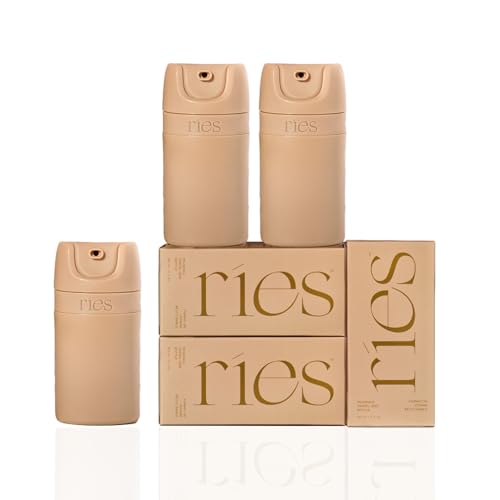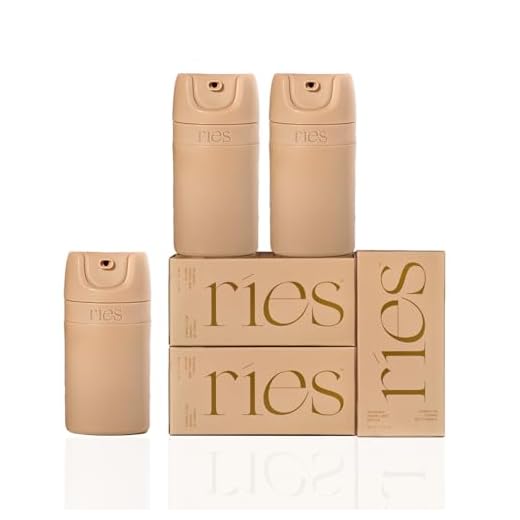





Travelers can carry containers filled with liquids, gels, and pastes onboard, with a maximum capacity of 100 milliliters per individual item. All such containers must fit into one transparent, resealable bag, which should not exceed one liter in total volume. Items exceeding this threshold will not be allowed past security checks.
It is advisable to prepare your liquids in advance and ensure compliance with these regulations. Consider using travel-sized bottles for your toiletries and cosmetics to facilitate smoother passage through security. Remember, exceptions apply for certain medical necessities and baby essentials, but they must be declared at the checkpoint.
Planning ahead and adhering to these guidelines can significantly enhance your travel experience, saving time at screening and preventing unexpected challenges at the airport. Keep all permitted items easily accessible in your backpack or purse for a quick inspection.
Guidelines for Carry-On Liquid Quantities
Containers must not exceed 3.4 ounces (100 milliliters) per item. All must fit within a single, clear, quart-sized (approximately 1 liter) plastic bag. Ensure that this bag is securely closed and easily accessible for security checks.
Exceptions and Special Cases
Medical supplies, baby food, and special dietary items can exceed standard restrictions but must be declared at security checkpoints. Always carry necessary documentation for medical items.
Recommendations for Travelers
Container sizes should be verified before travel to avoid unnecessary delays. Familiarize yourself with your airline’s specific protocols, as some may have additional stipulations. Prepare to remove the bag from your carry-on for screening to streamline the security process.
Understanding TSA Regulations for Liquids
Passengers must adhere to TSA guidelines which stipulate that containers holding fluids cannot exceed 3.4 ounces (100 milliliters) each. All such containers must fit within one quart-sized, clear, resealable plastic bag. This includes gels and creams, and all items must be removed from carry-on bags for separate screening at security checkpoints.
If traveling internationally, be aware that regulations may differ by country. Always check the rules of the departure and arrival locations. Additionally, purchase fluids after clearing security to avoid potential issues. Remember to consider unique items like medication or baby formula, which may have different rules regarding quantities.
To facilitate a smooth process, ensure your quart-sized bag is easily accessible before reaching the screening area. Be prepared to declare any larger bottles, as exceptions may be permitted for required medications, but proper documentation is advised.
Stay updated on TSA announcements, as policies may have periodic adjustments. Always prepare in advance to ensure compliance and minimize delays at airport security.
Common Exceptions to Liquid Restrictions
Certain items can bypass standard volume constraints due to their specific nature:
- Medications: Prescription and over-the-counter drugs may exceed typical quantities. Always bring documentation, such as a prescription or doctor’s note, to simplify the screening process.
- Infant Foods and Formula: Baby food, formula, and breast milk are allowed in reasonable amounts. Expect to taste these substances for security personnel if requested.
- Special Dietary Needs: Liquids necessary for health reasons, such as nutritional supplements or dietary beverages, can also exceed standard volumes.
- Duty-Free Purchases: Alcoholic beverages and perfumes acquired after the security checkpoint aren’t subjected to the same volume limitations, provided they remain sealed in approved bags.
Additional Guidelines
- Present these exceptions clearly at security checkpoints to avoid delays.
- Keep documentation handy to support claims regarding specific needs.
- Always check with individual airline policies as they may have specific rules concerning liquid carriage.
Adhering to these recommendations aids in a smoother travel experience, ensuring compliance with rules while accommodating personal requirements.
Packing Tips for Complying with Restrictions
Use clear, resealable plastic bags to store items. Opt for bags that are quart-sized, as they typically meet requirements for security checks. Ensure all container volumes are under 3.4 ounces (100 milliliters).
Arrangement and Organization
Place heavier bottles at the bottom of your bag to make it stable and prevent leaks. Keep your bag easily accessible for security inspection by packing it on top of other items.
Prioritize Necessities
Select only essential products. Consider solid alternatives for toiletries, such as bar soap or dry shampoo. If possible, purchase refreshments after passing security to avoid carrying any beverages.
Restrictions on Liquids for International vs. Domestic Flights
For international journeys, regulations generally require that containers hold no more than 100 milliliters (ml) each. Travelers must place these containers in a single, transparent, resealable plastic bag, not exceeding 1 liter in capacity. This rule remains consistent across many regions, including Europe and North America.
Domestic flights often mirror these restrictions, yet a few airlines may allow additional flexibility. In some cases, passengers might travel with larger quantities of specific liquids, especially in checked bags. Always verify airline-specific policies before departure, as this can save time and hassle during security checks.
Countries may implement unique exemptions, notably for medications and baby supplies. Documentation may be required for such items, allowing for compliance with necessary regulations without sacrificing essential needs.
For those seeking efficient packing strategies, consider investing in lightweight options that accommodate these requirements. Exploring choices such as best luggage for older women can enhance travel experiences while ensuring adherence to these regulations.
Awareness of variations can make a significant difference. Preparing in advance helps avoid unnecessary delays at checkpoints regardless of whether you’re traveling domestically or internationally.
Managing Liquids When Traveling with Children
Use small, travel-sized containers for all fluids needed for kids. These should fit into a single quart-sized clear bag. Always pack enough for the duration of the trip, considering layovers and delays.
Prioritize essential items. Items like baby formula, breast milk, and medication are typically allowed in greater quantities, but keep documentation handy, such as a doctor’s note for medications.
Consider solid alternatives. Snacks and solid food can be easier to transport and less tricky with security checks. Opt for snacks that won’t create a mess.
Prepare your kids for security. Explain the process to them calmly to reduce anxiety. Engaging them in packing can also help them feel in control.
Arrive early at the airport. This gives extra time to address any unexpected issues with fluid transportation. Flying with children often requires extra patience.
Research airport facilities. Some airports provide family-friendly services, including areas for children and amenities tailored to families.
For suitable travel gear, check out the best luggage for high school graduate to find durable options that can handle family trips.
Understanding the Meaning of ‘3-1-1 Rule’
To travel smoothly, adhere to the ‘3-1-1 Rule’: 3.4-ounce maximum capacity for each container, totaling one quart-sized clear plastic bag, and limited to one bag per traveler. This guideline simplifies compliance and prevents delays during security checks.
Breakdown of the ‘3-1-1 Rule’
| Component | Specification |
|---|---|
| Container Size | 3.4 ounces (100 milliliters) |
| Bag Size | Quart-sized (approximately 1 liter) |
| Number of Bags | 1 per passenger |
This regulation applies primarily to substances like gels, creams, and other similar products. Clear adherence to these parameters aids in ensuring a hassle-free experience. Ensure all items fit within the specified bag, as exceeding these limits may result in discarding items during airport security checks.
Ultimately, proper preparation supports a successful travel experience. For additional insights on management improvements in varied sectors, visit how can a healthcare organization improve its revenue cycle management.








